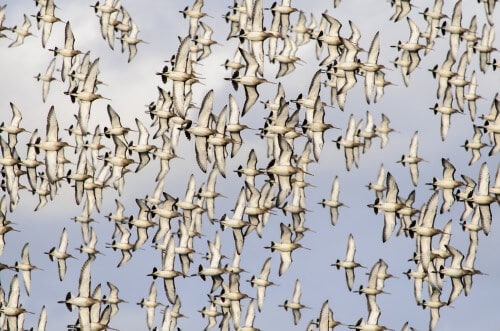Is slaughtering birds the best way to keep wild birds away from airplanes?

In 2012, wildlife inspectors killed 10,123 birds in the grasslands between the runways at New York's John F. Kennedy (JFK) International Airport, located northeast of Jamaica Bay Nature Reserve in the Queens borough of New York City. In the operation, thousands of seagulls, hundreds of starlings and turtledoves, and even some more majestic birds, such as the osprey and the American falcon, were killed. The killing operations that have been taking place at JFK for some time are just one example of the many efforts being made around the world to prevent dangerous and expensive collisions between birds and aircraft.
With the help of modern forensic tools, a less lethal approach may be possible. A group of Australian scientists claim that DNA found in the carcasses of birds killed by airplanes could lead to new ways of controlling the animals at airports.
The scientific investigation began with a phone call received by Michael Bunce, then working at Murdoch University, from employees at Perth Airport. "Look, we have a freezer full of birds here," he remembers the employees telling him. "Do you want them?" Soon he and his colleagues had 77 poultry carcasses to examine.
They began extracting the contents of the birds' digestive system and determining the DNA sequences found in the food. In a study published in 2013 in the journal Investigative Genetics, Bens and his colleagues showed a match of these gene sequences to known species of mice, fish, grasshoppers, and also some grass species.
This genetic analysis can guide airport maintenance crews in managing the ecology of the field in a way that keeps birds away from it. "If there is food available there, we can think about what can be done [to reduce the food]," says Benes. "For example, it is worthwhile to put nets in the waterways, poison rodents or spray with insecticides." In Perth, his findings led the airport to block waterways with nets, to prevent the entry of common gambosia fish, an invasive species to Australia that feeds on mosquitoes. Even if this kind of research only prevents one or two birds from being hit by an airplane," Benes says, "it pays off tens of thousands."
The article is published with the approval of Scientific American Israel
